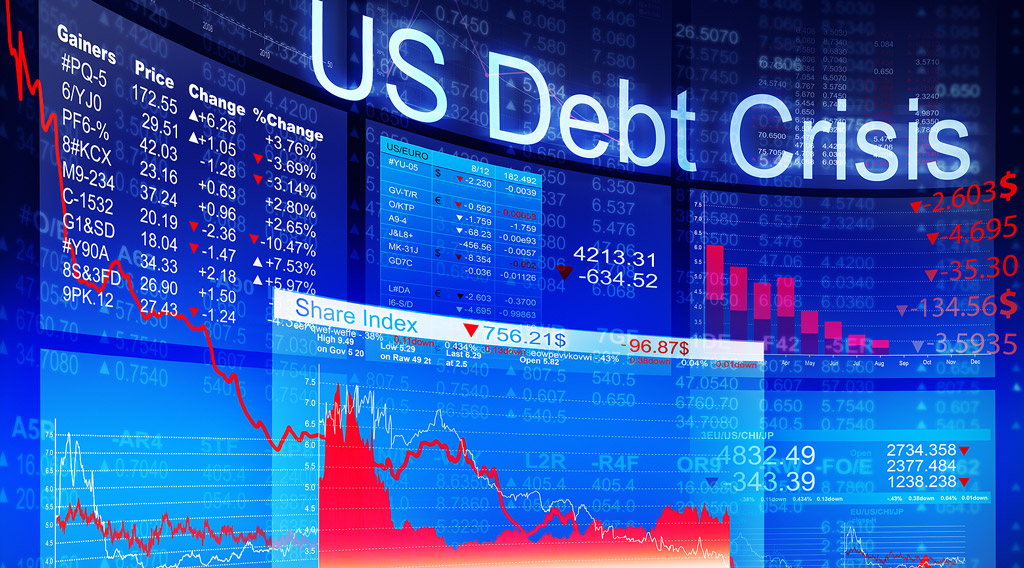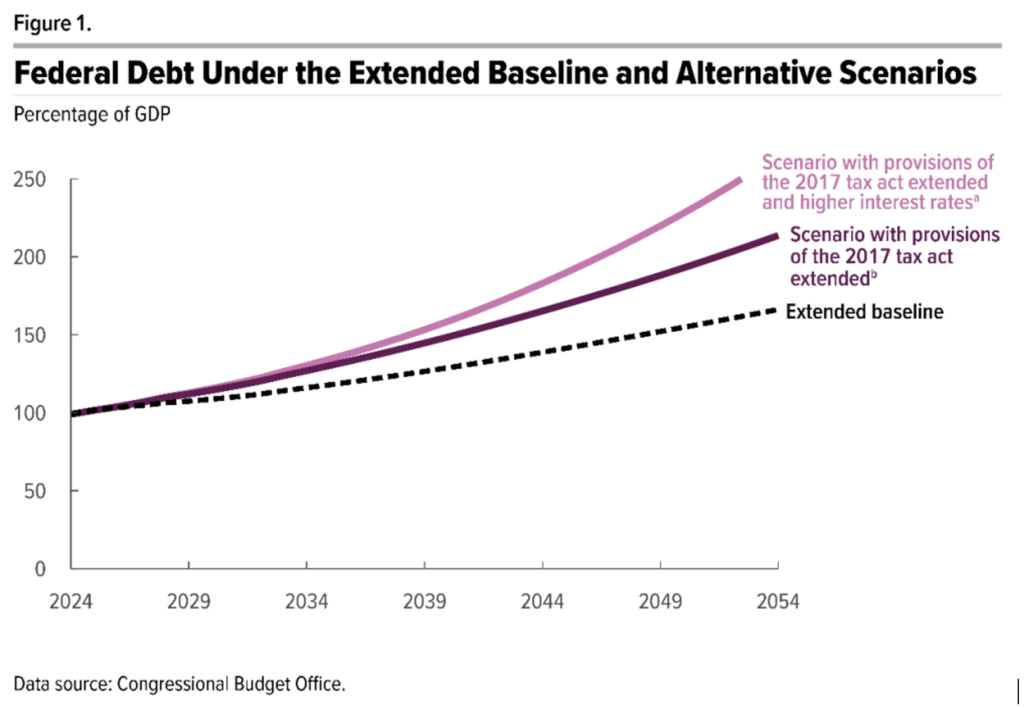 The US debt could soar to 200% of gross domestic product (GDP) by 2047, according to the Congressional Budget Office (CBO). The nonpartisan group plotted the budgetary consequences of cementing President Trump’s 2017 Tax Cuts and Jobs Act (TCJA) into law. The measure, which has widespread Congressional and White House support, could chart the country’s fiscal path into unsustainable territory.
The US debt could soar to 200% of gross domestic product (GDP) by 2047, according to the Congressional Budget Office (CBO). The nonpartisan group plotted the budgetary consequences of cementing President Trump’s 2017 Tax Cuts and Jobs Act (TCJA) into law. The measure, which has widespread Congressional and White House support, could chart the country’s fiscal path into unsustainable territory.
The Consequences of TCJA
Since 2017, the TCJA has transformed the US tax code by reducing taxes across income brackets, almost doubling standard deductions, expanding child tax credits, and reducing business income. While individual taxpayers and companies have benefited from lower taxes, the federal deficit and, by extension, national debt have suffered from decreased revenue.
This double-edged sword of private tax cuts and revenue depletion is on track to become permanent. Recently, Republican Representative David Schweikert of Arizona tapped the CBO to determine the long-term fiscal effects of the TCJA. The group analyzed three scenarios: the baseline, permanent tax cuts, and permanent tax cuts with higher interest rates.

1. Extended Baseline
If the TCJA expired as scheduled after 2025 and the government made no major policy changes, debt would still surpass post-WWII records. On this “neutral” track, debt-to-GDP would increase by 67% over the next 30 years, reaching a staggering 166% by 2054.
2. TCJA Provisions Extended
This scenario measures the effect of extending the TCJA without any offsetting spending cuts, which aligns with policy proposals by Trump and Congressional Republicans. The CBO report found that economic output spikes in the short term but faces slower growth, higher interest rates, and steep debt accumulation in the long run. In this case, debt-to-GDP surges to 214% in the same time frame, nearly 50% higher than the baseline scenario.
3. TCJA Provisions + Higher Interest Rates
An extension of the prior example, this projection includes an annual interest rate increase of 1%. This could come from inflation, quantitative tightening, or higher risk premiums. Regardless of the source, a slight increase in interest rates would boost debt-to-GDP to 250% by 2054. The total deficit would hit 16.6% of GDP by 2052.
How Much Debt is Unsustainable?
Notably, the CBO didn’t comment on the sustainability of the debt trajectory expected from the extension of the TCJA. However, the Penn Wharton Budget Model estimated the US could shoulder a debt-to-GDP ratio of roughly 200%. Anything over this limit would spell disaster.
This forecasting assumed “favorable market conditions” from which the economy is currently departing at a staggering pace.
According to the business school, the federal government has less than 20 years to take “corrective action” before a debt default becomes inevitable.
This timeline represents “the ‘best case’ scenario” for the country if Americans believe the government is taking necessary steps. With investor confidence tanking, the window of opportunity to course correct could be rapidly shortening.
Proponents Point to Economic Growth
In an interview with Fortune, an advocate for making TCJA permanent highlighted the potential for economic growth. The White House official suggested the tax cuts, along with Trump’s bold economic agenda, would remove excessive red tape and regulation, cut frivolous spending, and fuel growth.
The grim economic data paints a very different picture. Mathematically, the US cannot grow out of debt with spending continuing to outpace revenue. Even if flipping on the economic engines could take the country out of debt’s gravitational pull, experts are warning of negative GDP growth and a recession…not exactly the best recipe for a booming market.
Warnings Pile Up
Following decades of bipartisan support, the nation’s ballooning debt is finally starting to receive some criticism. Major banks are warning of scary debt risks given a trifecta of ongoing federal deficits, increasing debt-servicing costs, and stubborn inflation.
Larry Fink, the CEO of BlackRock, cautions that the debt will become a big burden on future generations. Billionaire investor Ray Dalio strikes a more immediate chord, suggesting the debt poses a heart attack risk for the economy.


